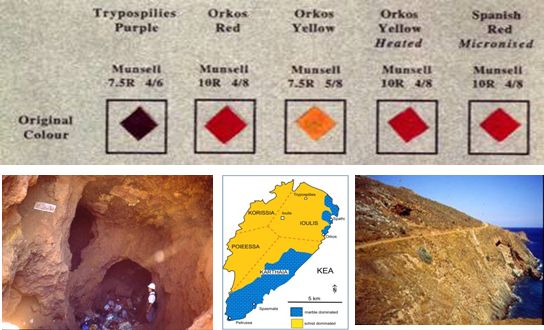Kea miltos
Kea miltos

Kea, a small island even by Aegean standards, enjoyed a considerable level of economic and cultural wealth intermittently from the Bronze Age to the Hellenistic period. However, Kea, together with the rest of the Cyclades, is richly endowed in mineral deposits, for example iron, lead/silver and possibly copper. In antiquity Kea was perhaps more famous for its miltos, a naturally occurring red iron oxide valued for its colour and wide range of applications which included pigments for a number of industries such as pottery, shipbuilding, cosmetics, pharmaceutical and metals assaying. Using relevant literature, field and laboratory analyses and simulation experiments, the work demonstrated that two Kean iron oxides, a dark purple and a brick red, both had unusual properties as pigments. The former had an extraordinary colour while the latter had a mineralogy mainly of goethite. The research throws open the suggestion that miltos was an umbrella term for a variety of Kean earths, supported by the number of different applications and the heating experiment which produced artificial miltos possessing attributes in colour, texture and composition of both the red and purple iron oxides.
Publication
Photos-Jones, E., Cottier, A, Hall, A.J. & Mendoni, L.G. 1997. Kean Miltos: the well-known iron oxides of antiquity. The Annual of British School at Athens. 92, 359-371 and colour plate B.

